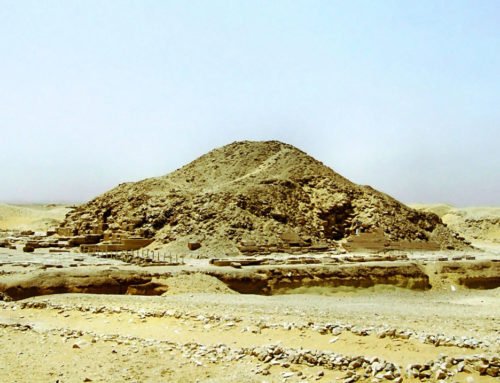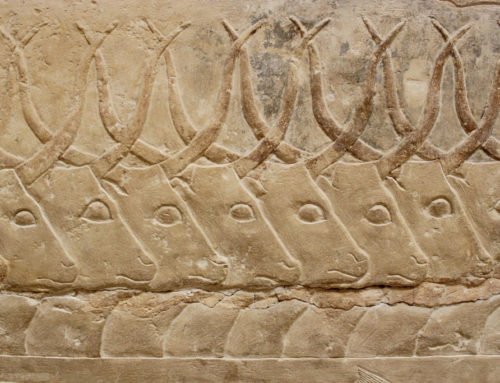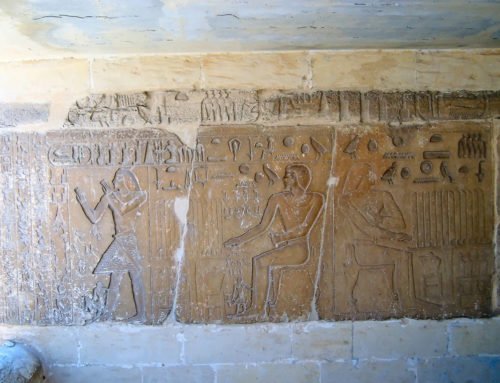Overview
- Features:
- Opening Times: 8am to 4pm (Oct to Apr), 8am to 5pm (May to Sep), 8am to 3pm (during Ramadan)
- Best Time to Visit: Early in the morning
- Duration: 30 mins to 1 hr
- Travelled By: On the Go Tours
- Cost: E£50
- Address: North Saqqara, Egypt
- Type: Monument
Author Reviews[display_rating_item_results rating_form_id=”2″ rating_entry_ids=”1″ show_category_filter=”false” show_options=”true” result_type=”star_rating” preserve_max_rating=”true” show_title=”false” show_count=”false” ]
Total Rating: [display_rating_result rating_form_id=”2″ show_count=”false” show_rich_snippets=true] [accordions load=”1″] [accordion title=”User Reviews” last] [display_rating_item_results rating_form_id=”5″ show_options=”true” result_type=”star_rating” preserve_max_rating=”true” show_title=”false” show_count=”true” show_rich_snippets=true] [/accordion] [accordion title=”Add Review”][display_rating_form show_email_input=”true” show_comment_textarea=”true” show_name_input=”true” rating_form_id=”5″] [/accordion] [/accordions]
Summary
The Step Pyramid of Djoser is the highlight of the Saqqara necropolis and it should be included in every visitor’s itinerary along with a visit to the pyramids in Giza. The reason it is such a popular attraction is because it was Egypt’s earliest stone monument and, hence, became the prototype for the pyramids of Giza and all other pyramids that followed. It marks an unprecedented leap forward in the history of world architecture.
Step Pyramid of Djoser
The Step Pyramid of Djoser is the highlight of the Saqqara necropolis and it should be included in every visitor’s itinerary along with a visit to the pyramids in Giza. The reason it is such a popular attraction is because it was Egypt’s earliest stone monument and, hence, became the prototype for the pyramids of Giza and all other pyramids that followed. It marks an unprecedented leap forward in the history of world architecture.
10 Interesting Facts about the Step Pyramid of Djoser
- In the year 2650 NC, the Step Pyramid was built by chief architect and high priest, Imhotep for the 3rd-Dynasty King Djoser
- It is Egypt’s and the world’s earliest stone monument and provided the prototype for the pyramids of Giza and all other pyramids that followed
- The Step Pyramid is made up of six levels of construction, each level smaller than the one below it
- It is surrounded by a vast funerary complex, enclosed within a limestone wall, and covers 15 hectares
- This complex included vast open courts, pavilions, shrines and chapels
- Some of the oldest known examples of tourist graffiti, dating from the 12th century BC, can be seen preserved under Perspex in one of the buildings east of the pyramid
- One of the highlights of the Step Pyramid is a colonnaded corridor of 40 pillars, ribbed in imitation of palm stems, leading into the Great South Court
- A star attraction inside the Great South Court is a restored section of wall bearing a frieze of cobras
- On the north side of the pyramid, there is a life-size painted statue of Djoser installed within a serdah (a stone box designed to allow the dead king’s ka (spirit) to interact with the living world)
- The construction of the Heb-Sed (area to celebrate the Jubilee Festival – seen as a symbolic rejuvenation and the recognition of the pharaoh’s supremacy) within Djoser’s funerary complex was intended to perpetuate his revitalisation for eternity
Getting to & from the Step Pyramid of Djoser
Saqqara is located 25 km south of Cairo and is best visited on a day trip from the capital.
If you’re an independent traveller, the quickest and easiest way to get to and from Saqqara is to hire a taxi.
The cheapest option is to take a bus / minibus to Saqqara Road and get off at the Saqqara Road stop. From there, take a microbus to the turn-off to the Saqqara site (ask for Haram Saqqara). From there, it’s a 1.5 km walk to the sites in Saqqara.
Detailed Information about the Step Pyramid of Djoser
Step Pyramid
In the year 2650 BC, Imhotep, the pharaoh’s chief architect (later deified) built the Step Pyramid for Djoser. It is Egypt’s (and the world’s) earliest stone monument, and its significant cannot be overstated. Previously, temples were made of perishable materials, while royal tombs were usually underground rooms topped with mud-brick mastabas. However, Imhotep developed the mastaba into a pyramid and built it in hewn stone. From this flowered Egypt’s later architectural developments.
The pyramid was transformed from mastaba into pyramid through six separate stages of construction and alteration. With each stage, the builders gained confidence in the use of the new medium and mastered the techniques required to move, place and secure the huge blocks. This first pyramid rose in six steps to a height of 60m, and was encased in fine white limestone.
The Step Pyramid is surrounded by a vast funerary complex, enclosed by a 1645m-long panelled limestone wall, and covers 15 hectares. Part of the enclosure wall survives today at a height of about 5m, and a section near the entrance was restored to its original 10m height. Fourteen false doors, formerly of wood but now carved from stone and painted to resemble real wood, hinges and sockets, allowed the pharaoh’s ka, or attendant spirit, to come and go at will.
The complex is entered at the south-eastern corner via a vestibule and along a colonnaded corridor into the broad hypostyle hall. The 40 pillars in the corridor are the original ‘bundle columns’, ribbed to resemble a bundle of palm or papyrus stems. The walls have been restored, but the protective ceiling is modern concrete. The roof of the hypostyle hall is supported by four impressive columns and there’s a large, false, half-open ka door.
Great South Court
The hypostyle hall leads into the Great South Court, a huge open area flanking the south side of the pyramid, with a section of wall featuring a frieze of cobras. The cobra, or uraeus, represented the goddess Wadjet, a fire-spitting agent of destruction and protector of the pharaoh. It was a symbol of Egyptian royalty, and a rearing cobra always appeared on the brow of a pharaoh’s headdress or crown.
Near the base of the pyramid is an altar, and in the centre of the court are two stone B-shaped boundary markers, which delineated the ritual race the pharaoh had to run, a literal demonstration of his fitness to rule. The race was part of the Jubilee Festival, or Heb-Sed, which usually occurred after 30 years’ reign, and involved the pharaoh’s symbolic rejuvenation and the recognition of his supremacy by officials from all over Egypt. The construction of the Heb-Sed featured within Djoser’s funerary complex was therefore intended to perpetuate his revitalisation for eternity.
The buildings on the eastern side of the pyramid are also connected with the royal jubilee, and included the Heb-Sed (Jubilee) Court. Buildings on the east side of the court represented the shrines of Lower Egypt, and those on the west represent Upper Egypt. All were designed to house the spirits of Egypt’s gods when they gathered to witness the rebirth of the pharaoh during his jubilee rituals.
North of the Heb-Sed Court are the House of the South and House of the North, representing the two main shrines of Upper and Lower Egypt, and symbolising the unity of the country. The heraldic plants of the two regions were chosen to decorate the columns capitals: papyrus in the north and lotus in the south.
The House of the South also features one of the earliest examples of tourist graffiti. In the 47th year of Ramses II’s reign, nearly 1500 years after Djoser’s death, Hadnakhte, a treasury scribe, recorded his admiration for Djoser while ‘on a pleasure trip west of Memphis’ in about 1232 BC. His hieratic script, written in black ink, is preserved behind Perspex just inside the building’s entrance.
Serdab
A stone structure right in front of the pyramid, the serdab (a small room containing a statue of the deceased to which offerings were presented) contains a slightly tilted wooden box with two holes drilled into its north face. Look through these and you’ll have the eerie experience of coming face-to-face with Zjoser himself. Inside is a near life-sized, lifelike painted statue of the long-dead pharaoh, gazing stonily out towards the stars. However, it’s worth noting that this statue is only a copy – the original is in Cairo’s Egyptian Museum.
The original entrance to the Step Pyramid is directly behind the serdab, and leads down to a maze of subterranean tunnels and chambers quarried for almost 6km through the rock. The pharaoh’s burial chamber is vaulted in granite, and others are decorated with reliefs of the jubilee race and features some exquisite blue faïence tile decoration. Although the interior of the pyramid is unsafe and closed to the public, part of the blue-tiled decoration can be seen in the Egyptian Museum.






Hi my name is Janette and I just wanted to drop you a quick note here. I discovered your post on The Step Pyramid of Djoser which is the highlight of Saqqara. We are really impressed so we’ll include it in our trip to Egypt. Thanks for the info.
Hi Janette,
We really enjoyed our visit to the Step Pyramid as it’s so unique and well maintained. Have a safe and wonderful trip in Egypt.